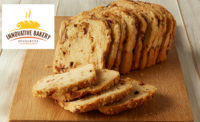Driving frozen snacks and appetizers forward through innovation

The frozen appetizers and snack rolls category saw positive growth over the past year, up 1.56 percent to $2.2 billion for the 52 weeks ending April 16, 2017, per IRI, Chicago (see our State of the Industry report, “Frozen snacks and appetizers capitalize on innovations,” for complete details).
While year-over-year category growth in frozen snacks and appetizers has only been slight, some brands have made a bold entrance to the freezer case. Frito-Lay launched its Doritos Loaded product in late 2016. For the 52 weeks ending April 16, 2017, the product garnered $28.7 million in sales. The bite-sized, triangle-shaped snacks are filled with cheese and covered in a crispy Doritos-flavored crust, and Frito-Lay recently added a Jalapeño & Cheese variety.
Innovation like this will help drive this market forward, bringing new levels of attention to the frozen food aisle. In order to dig deeper into the possibilities—particularly from the perspective of grain-centric innovations—we sought insights from Chef Jason Gronlund, technical sales manager, and Vikram Ghosh, technical sales, national accounts, both of Ardent Mills, Denver.
Douglas J. Peckenpaugh: What do you see as the biggest trends today in the frozen snacks and appetizers market?
Jason Gronlund: The existing trend of small, convenient, hand-held, and easy to heat continues to be what’s driving the space. In addition to that, we’re seeing a tremendous amount of interest in world flavors, as well as world grains. From a grains perspective, the interest is in both flours and intact grains.
 DJP: Which types of grain ingredients do you see as trending forward in frozen snacks and appetizers?
DJP: Which types of grain ingredients do you see as trending forward in frozen snacks and appetizers?
JG: Enrobed and filled snacks have a wow factor, and I see a lot more potential in this category. We’ve been developing different filled arancini with mixed grains; quinoa works really well with rice or to completely replace the rice and can be filled with sauce or cheese, or packaged with a dip. Our Great Plains Quinoa has a great texture for arancini, because it has some stickiness to it, yet it keeps the texture and pop of the grain.
The idea of “tots” also translates very well to grains like barley or quinoa. I like the idea of “dusted and dipped” tots that are finished with a spice mix, like a Mumbai dust and packaged with a chutney trio. You can even sneak greens and other veggies into a grain tot.
Vikram Ghosh: From an ingredient/flavor standpoint, exotic flavors, plant-based proteins, non-GMO, clean label, ancient grains and ingredients with a story can help generate interest among shoppers.
DJP: What are consumers today looking for in convenient, heat-and-eat products like frozen snacks and appetizers?
JG: Size is important. For instance, I think savory pastries like empanadas and Jamaican meat patties have huge appeal for people who like pizza rolls or “hot-pocket” type snacks, but they have to be smaller than the authentic versions. Another way to make these snacks more convenient and more fun is to include separate sauces in the packages, with easy heating or thawing instructions. Everybody loves to dip, it’s part of what makes appetizers, small plates and food truck food fun, and people will appreciate having dipping options at home. Consumers also want fail-safe results, so that exteriors are crisp and interiors have a great texture. Grains can play an important role in both of these last two aspects.
VG: Millennials seems to be the major shopper in this category. Two areas that seem to emerge among the millennials are indulgence and health. If given a choice, people go toward indulgence rather than health, so in many cases what they are looking at are products that are healthy yet satisfy their cravings. There is also an influence of exotic cuisine, such as Asian and Southeast Asian foods.
DJP: How are restaurant menu items influencing this category of retail foods?
JG: People are more open to trying new tastes and styles in the appetizer category, and food trucks in particular have become a great source of inspiration. People enjoy a little adventure and fun with their snacks. I could see a frozen package sampler of “food truck” snacks really piquing consumer interest. Foods like tamales, empanadas or tots could be packaged together with dips.
DJP: Which other types of under-represented or otherwise new frozen snack and appetizer product formats do you think could potentially capture consumer attention?
JG: This category needs to keep pace with global trends and do more with the flavors and styles that consumers like in ethnic restaurants, like dough-encased chicken tikka or a “pocket” version of a Cuban sandwich. Manufacturers can use authentic ingredients and flavors, but in snack forms and portions, like mini samosas or mini tamales. People want to hear the story behind their food, so packaging that describes the influences or the food truck inspiration could add to the appeal. I also see more potential in offering “healthy and nurturing” frozen snacks. Whole grains, with all their different textures, sizes and colors, can add better-for-you appeal to the favorites people already know.
Looking for a reprint of this article?
From high-res PDFs to custom plaques, order your copy today!






